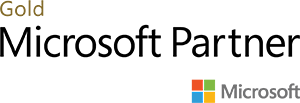This three-MOC packaged set aligned to Microsoft 365 Exam: Planning and Configuring a Messaging Platform contains courseware that helps prepare students for Exams MS-200. Passing this exam is required to earn the Microsoft 365 Messaging Administrator certification.
Courses in this packaged set:
- MS-200T01: Understanding the Modern Messaging Infrastructure
- MS-200T02: Managing Client Access and Mail Flow
- MS-200T03: Managing Messaging High Availability and Disaster Recovery
Who should attend
The Messaging Administrator deploys, configures, manages, and troubleshoots recipients, permissions, mail protection, mail flow, and public folders in both on-premises and cloud enterprise environments. Responsibilities include managing message hygiene, messaging infrastructure, and hybrid configuration and migration. The Messaging Administrator also implements and manages disaster recovery, high availability, and client access. The Messaging Administrator collaborates with the Security Administrator and Microsoft 365 Enterprise Administrator to implement a secure hybrid topology that meets the business needs of a modern organization. The Messaging Administrator should have a working knowledge of authentication types, licensing, and integration with Microsoft 365 applications.
Course Prerequisites
This course is designed for persons who are aspiring to the Microsoft 365 Messaging Administrator role.
What you will learn
After completing this course, students will be able to:
- Understand the Modern Messaging Architecture
- Deploy and Manage a Modern Messaging Architecture
- Create and Manage Exchange Recipients
- Manage Email Addresses, Lists, and Resources
- Plan for Mailbox Databases
- Create and Manage Mailbox Databases
- Manage Authentication for Messaging
- Configure Organizational Settings
- Configure Organizational Sharing
- Implement Client Access Services
- Manage Client Devices
- Configure Outlook on the Web
- Troubleshoot Client Access
- Configure Mobile Device Mailbox Policies
- Manage Mobile Device Mailbox Policies
- Configure Message Transport
- Manage Transport Rules
- Manage Mail Flow
- Troubleshoot Mail Flow
- Troubleshoot Transport Issues
- Troubleshoot with Logs
- Plan High Availability for Mailbox Servers
- Plan High Availability for Client Access Service
- Plan High Availability for Transport
- Implement Site Resilience
- Plan for Disaster Recovery
- Implement Backup Strategies
- Restore Mailboxes, Databases, and Servers
- Plan the Public Folder Hierarchy
- Implement and Manage Public Folders
- Troubleshoot Public Folders
Only registered users can write reviews. Please Sign in or create an account

